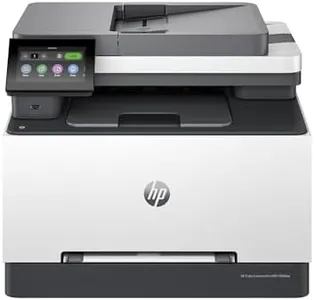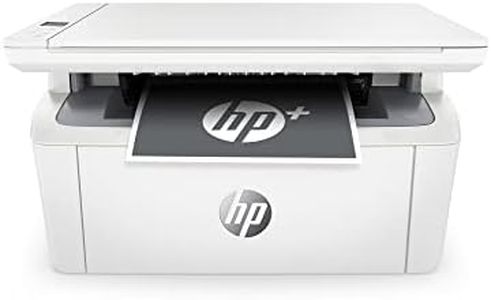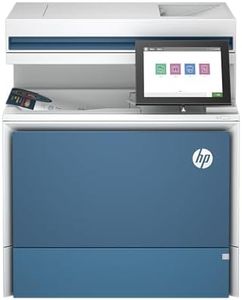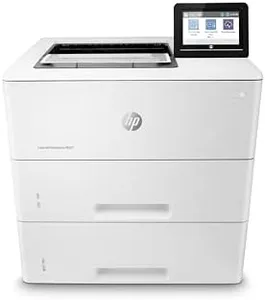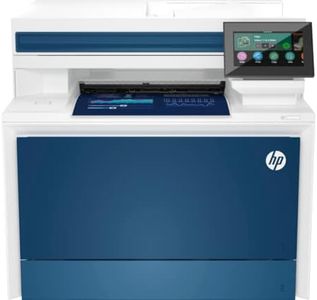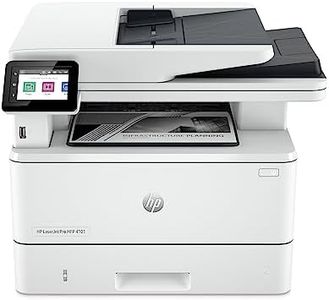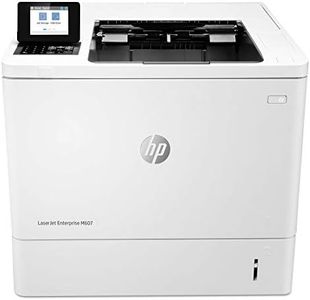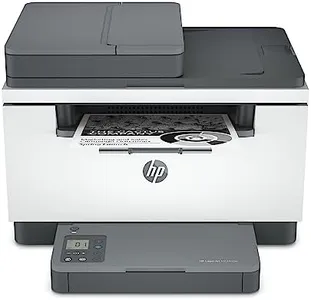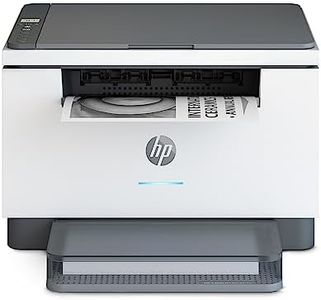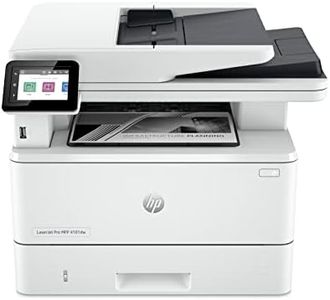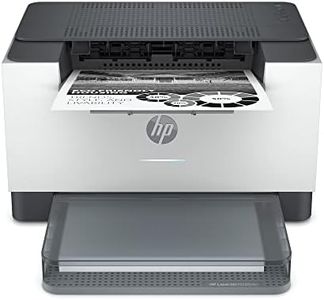We Use CookiesWe use cookies to enhance the security, performance,
functionality and for analytical and promotional activities. By continuing to browse this site you
are agreeing to our privacy policy
10 Best Hp Laser Printers
From leading brands and best sellers available on the web.Buying Guide for the Best Hp Laser Printers
Choosing the right HP laser printer can make a big difference in your daily printing experience, whether it's for home, office, or a small business. It's important to think about what you'll be printing, how often, and what features matter most to you. By understanding the key specifications, you can find a printer that matches your needs and avoids unnecessary features or limitations.Print Speed (Pages Per Minute, PPM)Print speed tells you how many pages the printer can produce in one minute. This is important if you often print large documents or need quick results. Lower speeds (under 20 PPM) are usually fine for occasional home use, while moderate speeds (20-30 PPM) suit small offices or frequent printing. High speeds (over 30 PPM) are best for busy offices or heavy-duty use. Think about how much you print and how quickly you need your documents—if you print a lot or share the printer with others, a higher speed will save you time.
Print Resolution (DPI)Print resolution, measured in dots per inch (DPI), affects how sharp and clear your printed text and images will look. Basic printers offer around 600 x 600 DPI, which is good for standard text documents. Higher resolutions (1200 x 1200 DPI or more) are better for detailed graphics or professional-looking documents. If you mostly print text, standard resolution is enough, but if you need crisp images or fine details, look for a higher DPI.
Monthly Duty CycleThe monthly duty cycle is the maximum number of pages a printer is designed to handle in a month. This helps you understand how durable the printer is for regular use. Light-duty printers are rated for a few thousand pages per month, suitable for home or small office use. Medium-duty models handle up to 10,000 pages, while heavy-duty printers can go much higher. Estimate your average monthly printing and choose a printer with a duty cycle comfortably above that number to ensure reliability and longevity.
Connectivity OptionsConnectivity refers to how you connect your printer to your computer or network. Common options include USB, Ethernet, and Wi-Fi. USB is simple for single-computer use, Ethernet is great for wired office networks, and Wi-Fi allows wireless printing from multiple devices, including smartphones and tablets. If you want to print from different devices or locations, look for wireless or networked options. For single, direct use, USB may be all you need.
Duplex PrintingDuplex printing means the printer can automatically print on both sides of the paper. This feature saves paper and is convenient for creating professional-looking documents. Some printers require manual duplexing, where you flip the paper yourself. If you often print multi-page documents or want to save on paper, automatic duplexing is a helpful feature to have.
Paper Handling CapacityPaper handling capacity refers to how much paper the printer's input tray can hold at once. Smaller trays (around 150 sheets) are fine for light use, while larger trays (250 sheets or more) are better for frequent or high-volume printing. If you don't want to refill paper often, or if multiple people use the printer, a higher capacity is more convenient.
Toner Cartridge YieldToner cartridge yield tells you how many pages you can print before needing to replace the toner. Standard-yield cartridges are cheaper upfront but need replacing more often, while high-yield cartridges last longer and can be more cost-effective over time. If you print a lot, high-yield cartridges reduce the hassle of frequent replacements.
Multifunction FeaturesSome laser printers are multifunction, meaning they can also scan, copy, and sometimes fax. If you need these features, look for an all-in-one model. If you only need to print, a single-function printer is simpler and may be more compact. Consider what tasks you need your printer to handle before deciding.
